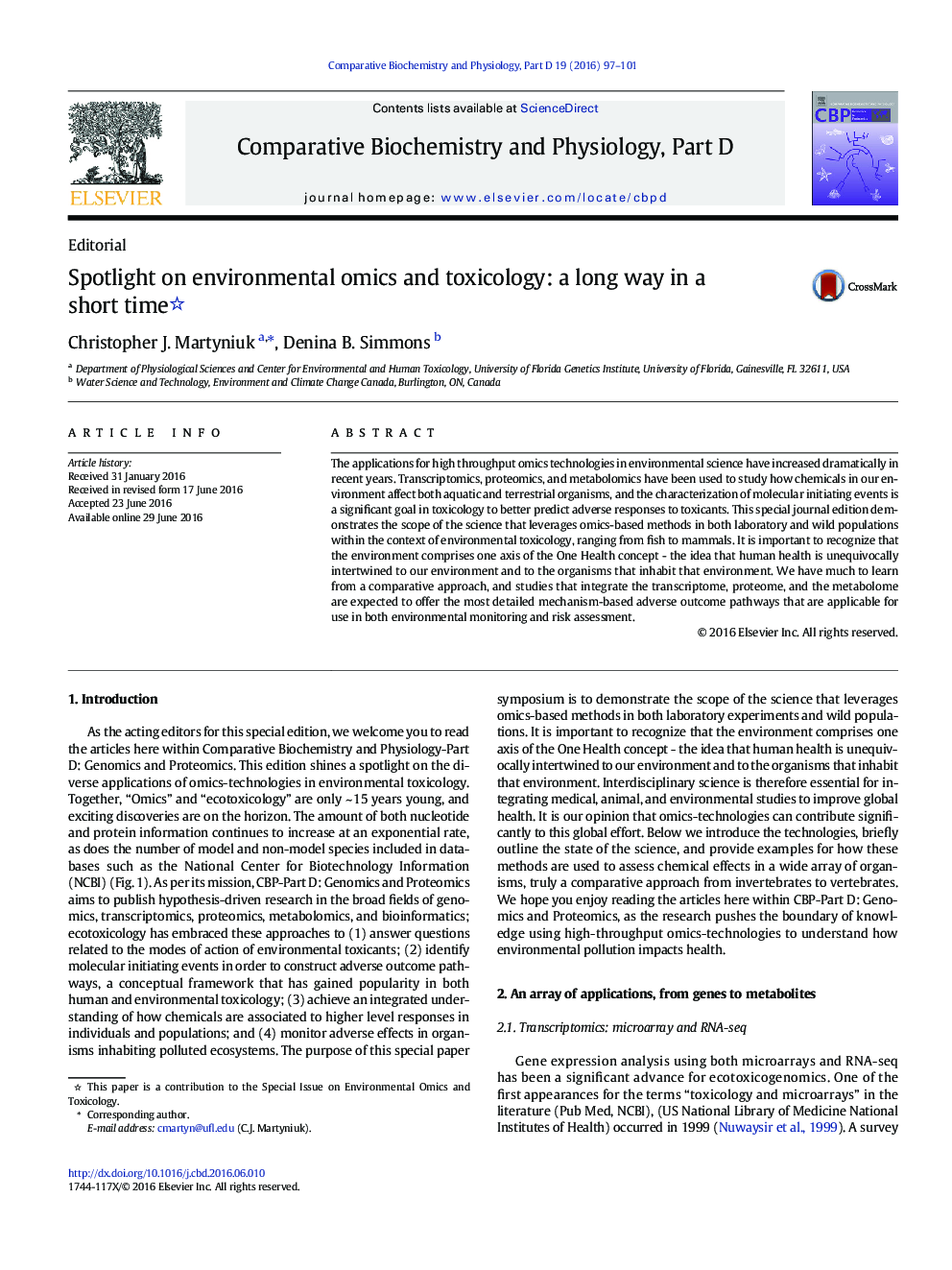| Article ID | Journal | Published Year | Pages | File Type |
|---|---|---|---|---|
| 1978497 | Comparative Biochemistry and Physiology Part D: Genomics and Proteomics | 2016 | 5 Pages |
The applications for high throughput omics technologies in environmental science have increased dramatically in recent years. Transcriptomics, proteomics, and metabolomics have been used to study how chemicals in our environment affect both aquatic and terrestrial organisms, and the characterization of molecular initiating events is a significant goal in toxicology to better predict adverse responses to toxicants. This special journal edition demonstrates the scope of the science that leverages omics-based methods in both laboratory and wild populations within the context of environmental toxicology, ranging from fish to mammals. It is important to recognize that the environment comprises one axis of the One Health concept - the idea that human health is unequivocally intertwined to our environment and to the organisms that inhabit that environment. We have much to learn from a comparative approach, and studies that integrate the transcriptome, proteome, and the metabolome are expected to offer the most detailed mechanism-based adverse outcome pathways that are applicable for use in both environmental monitoring and risk assessment.
